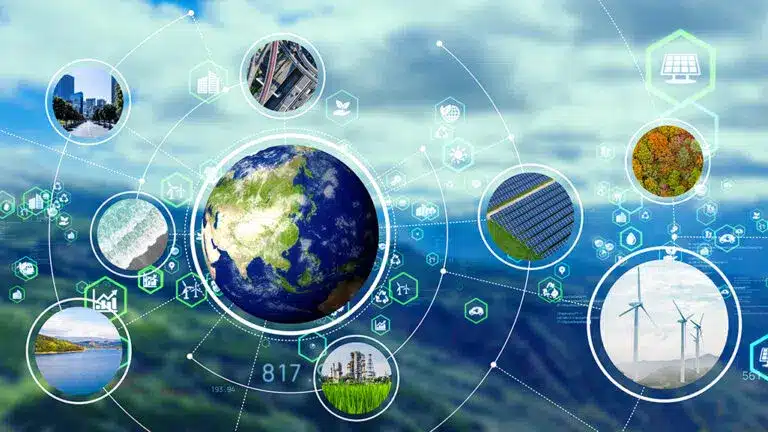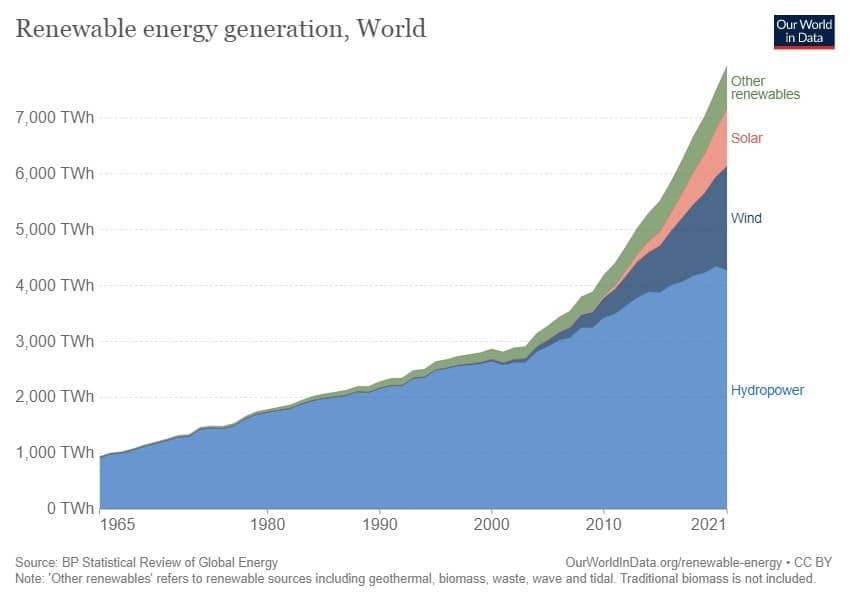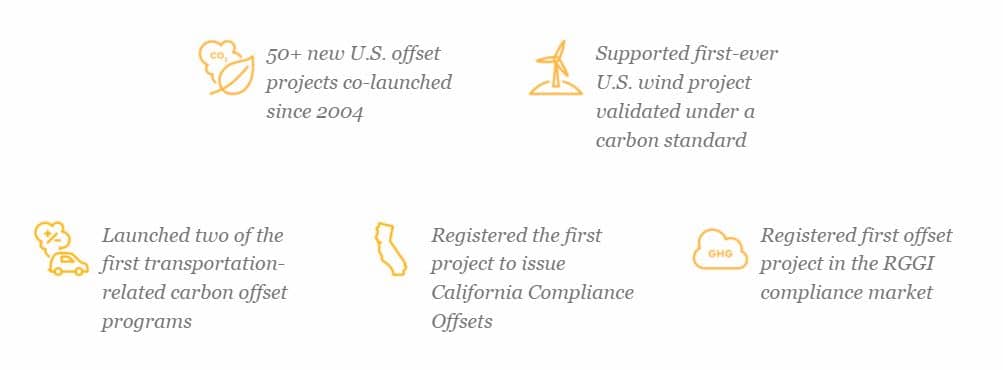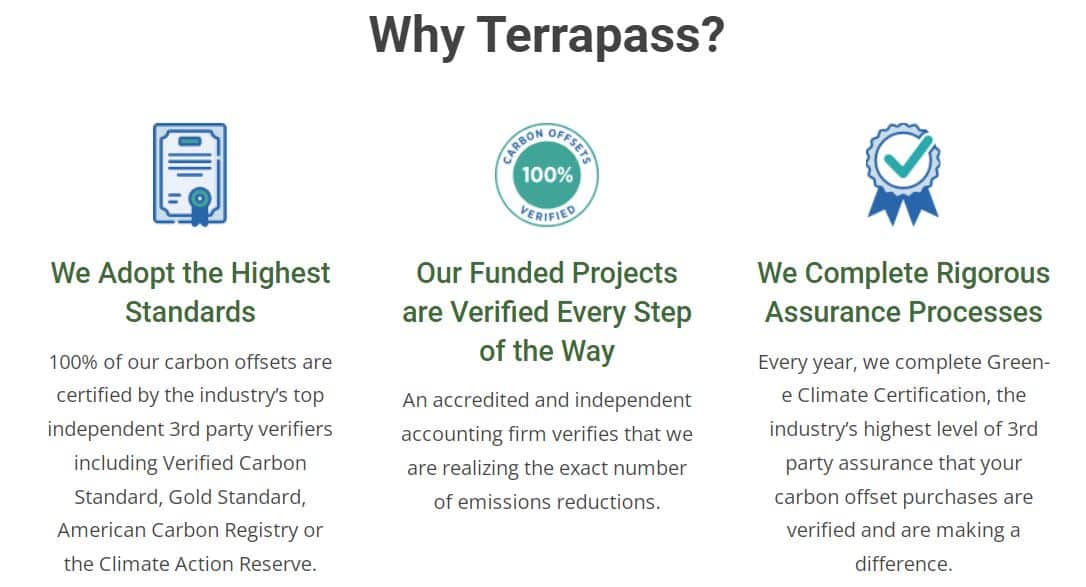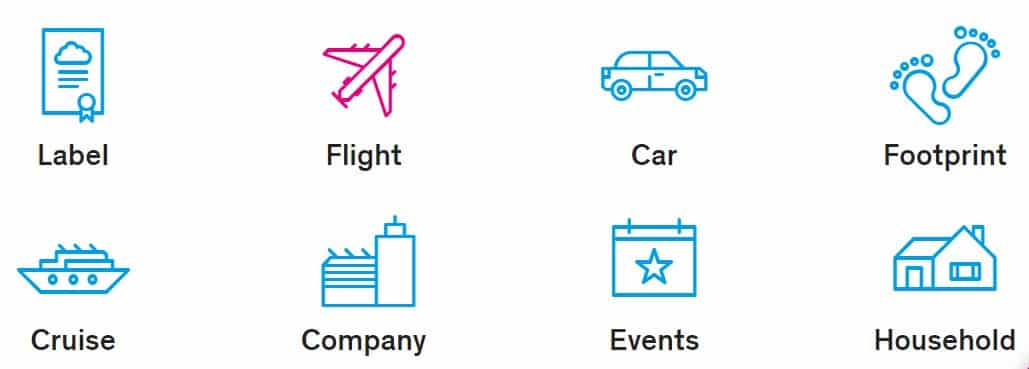All companies will have to take responsibility for their carbon footprint and carbon offsetting projects are becoming their strong ally.
A business may have already identified its emissions sources, calculated its GHG emissions, and implemented strict reduction measures…yet, hard-to-abate emissions persist. They are emissions that can neither be reduced nor prevented.
Though there are technologies currently being developed to further help in companies’ carbon reduction goals, immediate actions are necessary to compensate for unabated footprint.
If there’s something that can be done right now to that end, it’s investing in carbon offset projects.
If done in the right way… carbon offsetting projects can have several real positive impacts on the climate. Many can even support sustainable development on site.
But if implemented improperly… they deliver insufficient results or may serve as a cheap alternative to more elaborate and real changes companies need.
So, what are carbon offset projects or how do they work? What are some types of carbon offsetting projects to consider?
You’ll know in detail as we explain them below while also introducing to you the best carbon offset programs you may consider.
What are Carbon Offsetting Projects?
Carbon offset projects are verified activities of environmental conservation or protection which reduce, avoid, or remove greenhouse gas (GHG) emissions from the atmosphere, helping to mitigate climate change.
As Article 12 of the Kyoto Protocol says, governments and companies may fund carbon offset projects as part of their emission reduction strategies as well as to promote sustainable development in developing countries. This financial support enables project activities that reduce emissions.
To put it another way, financing carbon offsetting projects compensates for CO2 emissions that were already in the atmosphere elsewhere.
Each tonne of emissions reduced by a project creates one carbon offset or carbon credit. Both individuals and companies can invest in these projects directly or buy the carbon credits to offset their own carbon footprints.
Carbon offset credits are tradeable on the market and face controversy in how easy they are to attain.
Yet, the concept is the same: a company is more or less investing in a carbon offset project to balance their own emissions.
What is the best way to offset carbon?
Carbon offset projects involve different efforts or innovations in climate action. Some are into protecting ecosystems over afforestation of new, or reforestation of degraded land. Others involve rolling out clean energy technologies or renewable energy sources.
Other schemes work by soaking up CO2 directly from the air by planting trees.
Carbon offset schemes vary widely when it comes to cost. But a fairly typical fee would be around $12 for each tonne of carbon offset. At this price, a typical family would pay around $45 to offset a year’s worth of gas and electricity use.
Some people may want to offset their entire carbon emissions while others seek to balance the footprint of their specific activity such as travel.
To do that, the traveler checks a carbon offset program and uses its online tools to determine the emissions of its travel and then buy the offsets to reduce emissions elsewhere. By paying the offset company, the emitter flight’s become “carbon neutral”.
But carbon offsetting projects don’t just slash emissions. They can also achieve other benefits such as creating jobs, improving education, and enhancing living conditions in local communities.
Types Of Carbon Offsetting Projects
As mentioned, there are various ways of offsetting carbon emissions.
Specifically speaking, there are over a hundred projects that can offset emissions. But broadly speaking, they can be categorized into these four major types.
Forestry and Conservation
Reforestation and nature conservation have been the most popular offsetting schemes. Carbon offset credits are created based on either the carbon captured or the carbon avoided from entering the atmosphere by protecting trees.
Common examples of these offset projects are reforesting the Amazon rainforests and replanting mangroves.
As a nature-based climate collusion, forestry projects may not be the cheapest option. But they are often selected for the many benefits outside of the carbon offset credits they bring. E.g. Protecting ecosystems, wildlife, and social heritage is important for companies offsetting their carbon emissions.
But what could be the problem with carbon offsets generated by these projects?
Critiques say that the corresponding credits forestry projects create are questionable. How could that be? It’s hard to determine how much carbon is reduced with these offset projects.
But the tide has turned because of the new technologies that emerge that measure carbon stored in forest trees. Methods of sustainable reforestation efforts and getting their benefits have improved a lot.
Renewable Energy
Renewable energy offsets are from projects that involve installing solar, wind, or hydro sites across the globe.
If you decide to invest in these projects, you are helping boost the level of renewable energy available on the grid.
Not to mention that you’re also decreasing the reliance on fossil fuels.
After all, renewable energy’s goal has always been decarbonization.
As of 2022, about 30% of the world’s electricity comes from renewables, including hydropower, solar and wind. And the demand for renewables is also growing fast.
Carbon offsetting projects involving renewables have been prevalent and so common in different countries. Take the case of India, for instance. Believe it or not, this super emitter has seen the fastest growth in renewable energy across all big economies, receiving billions of dollars in investment.
Community Projects/Energy Efficiency
Community projects usually involve application of energy efficiency technologies to less- or undeveloped communities. These carbon offset projects often have many other benefits than just for offsetting purposes.
They don’t only help make local communities or regions more sustainable. They can also provide empowerment that can help lift communities out of poverty.
Water purifier manufacture and distribution is a common example of this project. It can also be providing clean drinking water to communities by making or fixing boreholes.
Efficient cookstoves have also been popular recently with the likes of EKI Energy investing in them. These projects are often found in Africa and India where poor local communities are still using fire woods to cook food.
So how do these projects reduce carbon emissions?
Families don’t have to burn firewood to boil water or cook their food. In effect, this protects their local forests and reduces indoor air pollution. Not to mention the empowerment provided to women who often supervise these community projects.
Waste to Energy Projects
This last type of carbon offsetting projects typically involves methane capture in industrial facilities. The harmful gas is then converted into electricity.
Sometimes, this project means capturing landfill gas or agricultural waste in smaller regions.
For example, building and maintaining biogas digesters to turn waste into clean and sustainable energy doesn’t only cut waste but also slash GHG emissions. It reduces methane released into the air while also protecting the local forests.
With all these various types of carbon offset projects, you are perhaps asking which ones of them are the best pick? Well, each project is unique and is developed for certain reasons.
A carbon offset project is an initiative developed to reduce actual GHG emissions and it can be in any sector, agricultural to industrial. On the other hand, a carbon offset program refers to a set of standards made by a company or organization to measure, regulate, and review carbon offset projects.
So, the right question would be what are the best carbon offset programs?
What Are The Best Carbon Offset Programs?
Both businesses and individuals use carbon offset programs to look for the right offset project to invest in. These programs offer different carbon offset projects that you can select to support.
So, how do you know you got the best carbon offset program to trust?
We’ll give you a couple of top options below. The selection is based on certain things such as transparency, the projects’ carbon offset quality, types or range of projects in offering, among others.
One more vital criterion is third-party verification because it’s critical to validating that the project is really reducing carbon emissions. Plus, of course, adherence to high social and environmental integrity standards is also considered.
Best Carbon Offset Programs – Top 4 Picks
Native Energy
Making it on the top spot is Native Energy, founded around the 2000s. Apparently, it’s operating in the carbon offset space for quite some time. Being certified as a B Corp and Public Benefit Corp tells us that it meets high standards for social and environmental programs.
Native Energy is also transparent about the quality of the carbon offsets their project offering produces.
Best of all, the carbon offset program offers a broad range of projects for both individuals and companies. They cover the following project types:
- Clean water
- Nature-based
- On-farm
- Regenerative AG
- Removals (CDR)/Drawdown
- Renewable energy
The program also has specific calculators in place that small businesses can use. For instance, small companies can use its travel, freight, or even calculators to measure emissions, and to offset either by dollar or by tons of CO2.
In the same way, individuals also have tools on their disposal when it comes to calculating travel, household, or activity footprint. The results of the calculation will then determine the cost needed to offset the footprint. The money paid by the polluter would then be invested into a specific carbon offset project they pick.
To date, the program manages to achieve these results:
The confidence of their clients also lies in the fact that the carbon offsets they have are verified by the top carbon standards, namely: Gold Standard, Verra, Climate Action Reserve, and American Carbon Registry.
3Degrees
If you’re a business owner, then this carbon offset program could be your best selection. 3Degrees’ carbon offset projects are specifically meant to help businesses and utilities decarbonize their operations.
Just like Native Energy, 3Degrees is also a certified B Corp, transparent, and with third-party verified projects. However, it doesn’t have projects available for individuals, so take note of that cons.
The program came about in 2007, believing that businesses have a key role to play in fighting the climate crisis. For over 15 years, 3Degrees has been a pioneer in providing climate solutions. Within that time period, the company has achieved these results:
The company also deals with many other carbon offset projects apart from nature-based solutions. They mostly include landfill gas capture projects.
Setting aside its proven track record in the space, what makes 3Degrees stand out from other best carbon offset programs are these points:
Quality Standards: the carbon offset program works with all four of the major voluntary carbon offset standards as the case with Native Energy. 3Degrees further ensures that each project adheres to approved protocols.
Tailored Solutions: 3Degrees help companies build a portfolio of high-quality projects that are relevant to their business and stakeholders.
Portfolio Management: holistic approach to managing portfolio while working with clients to balance immediate need with long-term goals.
Here are the specific offset projects that 3Degrees has under its hat:
- Agricultural methane capture/combustion
- Wind power
- Forest management
- Solar power
- Oil recycling
- Energy efficiency
- Emission reduction
- Biogas
- Landfill gas methane capture and destruction
Terrapass
Getting third place on the best carbon offset programs is Terrapass. It makes carbon offsetting easy for both corporates and individuals through its monthly subscription model.
It has pre-packaged bundles and monthly subscription services that make it easy for emitters to choose to address their footprint. What this means is that it would be very easy for you to offset your footprint on a monthly basis.
The company was launched in 2004 originally to help individual people reduce their travel’s carbon footprint. But after its portfolio has grown to include energy consumption, the program has helped 1,000+ entities and individuals pay for their climate impact.
Same with the previous programs, Terrapass also provides useful carbon tools or calculators for individuals, businesses, and even special events! The program covers these carbon offset projects:
- Landfill gas capture
- Abandoned coal mines methane capture
- Wind power
- Forestry
- Farm power
- Water Restoration Certificate
Those offset projects are verified by the most-recognized carbon standards. So, why pick Terrapass?
Here’s why…
myclimate
Making it on the last list of our best carbon offset programs is myclimate. It’s a great option for multiple environmental impacts because of its extensive and diverse carbon offset projects. These include:
- Biogas
- Biomass
- Efficient cookstoves
- Energy efficiency
- Hydropower
- Land use and forestry
- Solar waste management and compost
- Water (purification and saving)
- Wind
Founded in Switzerland in 2002, myclimate is an award-winning carbon offset program that covers 170+ projects in 45+ countries worldwide. Its other achievements in many aspects are outstanding and involve more than just cutting emissions.
In particular, it financed 13 million tonnes of carbon reduction, planted over 18 million trees, and installed more than 775,000 efficient cookstoves.
It also has easy-to-use carbon footprint calculators for these areas:
Finally, myclimate serves a very wide range of clients from individuals to nonprofits, and companies of every size. You can be confident that your money serves its value by going to the project of your choice, with its carbon reductions verified by these offset quality standards:
- Gold Standard
- Plan Vivo
- Verra
- Agencies of the Swiss Government
Best Carbon Offset Programs For Individuals
Needless to say, there are a lot more programs available for carbon offsetting projects. And their number continues to grow as the world is in urgent need to decarbonize.
But not all of them have the same results or standards they adhere to. The top four options identified are a good place to start and narrow down your choices. And if you’re particularly looking for the best carbon offset programs for individuals, then just take out 3Degrees from the list of options.
The remaining three programs work best for your individual or personal carbon offsetting needs. The carbon offset projects they offer are equally diverse.
Just remember that each project is unique so check out their details before you bet your money into it. And before anything else, see to it that the program you pick meets rigorous offsetting standards and is verified by a third party.
Lastly, you can also think about whether you want a program that supports projects in your locality or in international regions.

